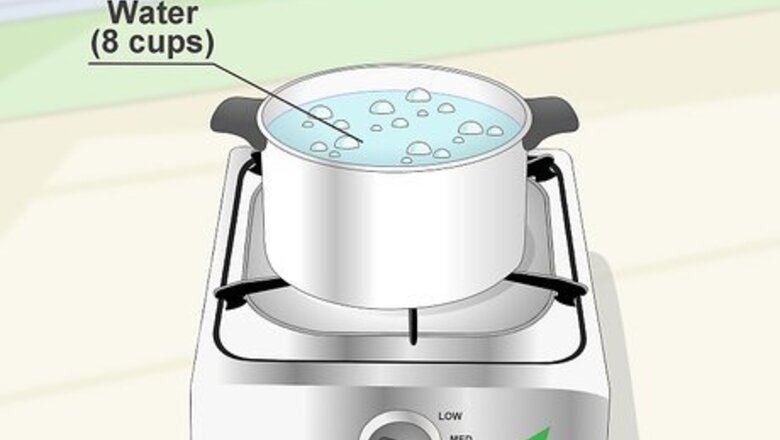
views
Removing Grease Buildup
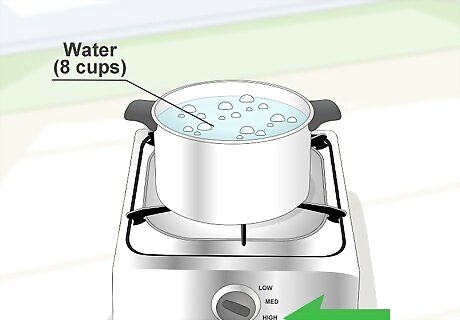
Bring two liters of water to a rolling boil. Measure two liters (8 cups) of water and pour it into a pot and place it over your stovetop. Turn the stove to high until the water starts to bubble. You can also use a kettle or electric water heater to heat up the water.
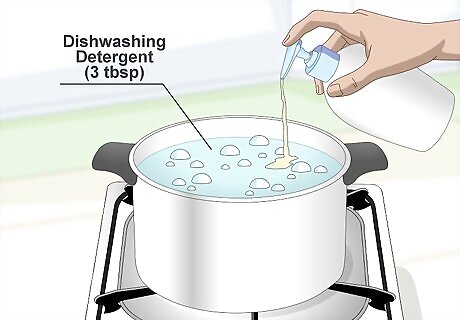
Add dishwashing detergent to the water. Combine three tablespoons (44.36 ml) of dishwashing detergent to the water as it boils. Then, turn off the heat on the stovetop and carefully lift the pot of water and take it to your drain.
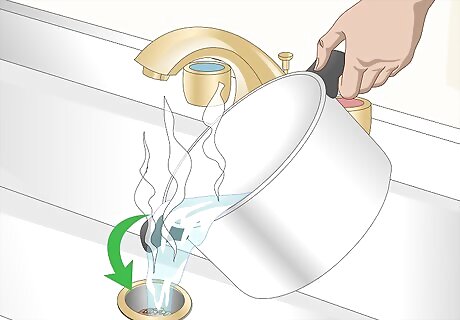
Pour the water down the drain. Carefully tip the pot or kettle so that the water goes down the drain. If you have plastic pipes, you should allow the water to cool for four to five minutes before pouring it down the drain. Rex Cauldwell Rex Cauldwell, Licensed Master Plumber Regular drainage pipe maintenance is crucial for every homeowner. Flushing pipes prevents minor clogs from becoming major blockages. Baking soda and vinegar can clear more stubborn obstructions without using harsh chemicals that risk eroding pipes. If a clog persists despite your efforts, calling a professional plumber is wise. Their specialized tools can clear blockages without damaging the system. Although hiring a technician costs money upfront, it prevents exorbitant repairs down the line. An ounce of prevention is worth a pound of cure when maintaining drains.
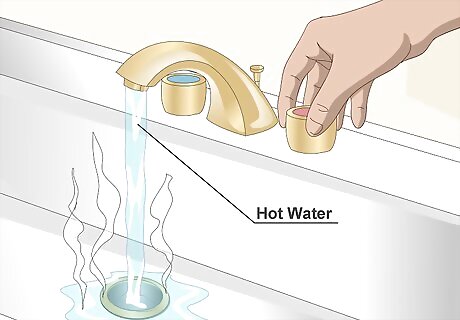
Flush the drain with hot water from the faucet. After the hot water has drained, turn on your faucet on the highest heat. If the drain is clogged or slow, you may have to repeat the process to remove bigger grease obstructions and unclog it. EXPERT TIP Claudia & Angelo Zimmermann Claudia & Angelo Zimmermann House Cleaning Professionals Claudia and Angelo Zimmermann are the founders of Everneat, an Eco-Friendly Cleaning Service based in New York City and in Connecticut. They are also the founders of Clean Code, a DIY 100% natural cleaning product line. Claudia & Angelo Zimmermann Claudia & Angelo Zimmermann House Cleaning Professionals Try this alternative using baking soda and boiling water: For an easy, natural way to clean your drain pipes, pour 1 cup of baking soda down the drain, followed by 2 cups of boiling water. Let the mixture work for about 30 minutes, then use a plunger to break up any clogs.
Using Conventional Drain Cleaners
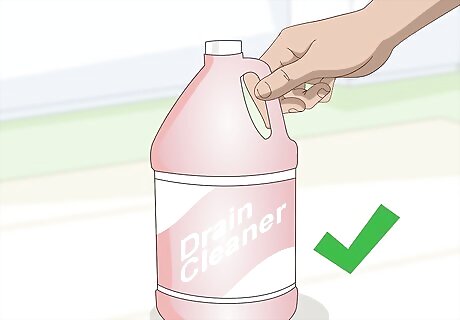
Purchase a drain cleaner from the store or online. Decide which kind of drain cleaner that you want to use. Options include traditional cleaners, foaming cleansers, and enzyme cleaners. Traditional and foaming cleansers may contain chemicals that are harmful to the environment while enzyme cleansers are made of natural ingredients.
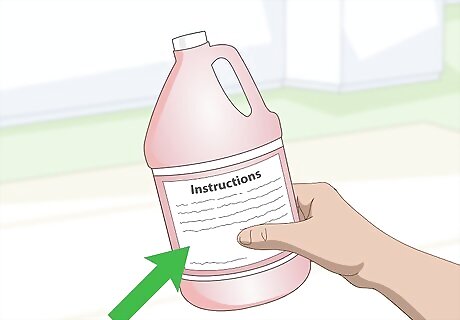
Read the instructions on the packaging. Because all drain cleaners are different, it's important that you read the instructions so that you know how long you should let the drain cleaner sit before flushing it. Enzyme cleaners work best in warm water rather than hot water. Do not combine two different types of chemical drain cleaners or it can create toxic fumes.
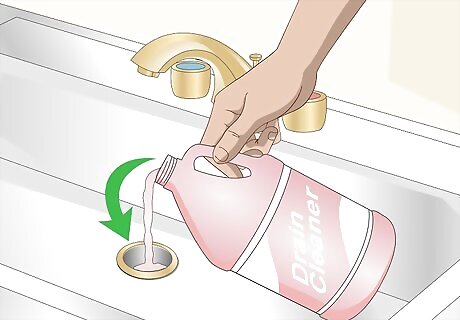
Pour the drain cleaner down the drain. Pour the appropriate amount of drain cleaner down the sink according to the directions. If your drain is clogged, you'll see the solution settle near the top of your drain pipe.
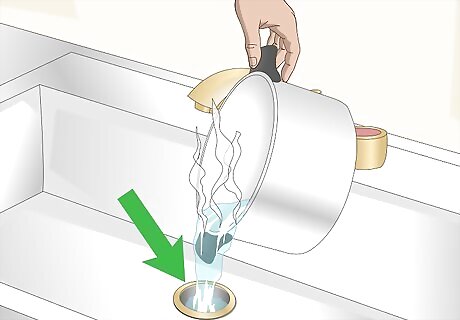
Flush the drain with hot or boiling water. After letting the drain cleaner sit in the drain, you will have to flush the rest of the cleaner down the drain with warm or hot water. Follow the directions on the packaging for the optimal results.
Use a Plunger to Remove Food Obstructions
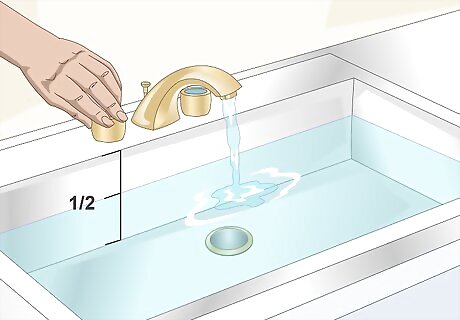
Close the sink drain and fill the sink up halfway with water. You'll need to fill the sink up to create suction so that you can push out the obstruction. Fill the sink up about halfway so that there's enough water to fully submerge the plunger.
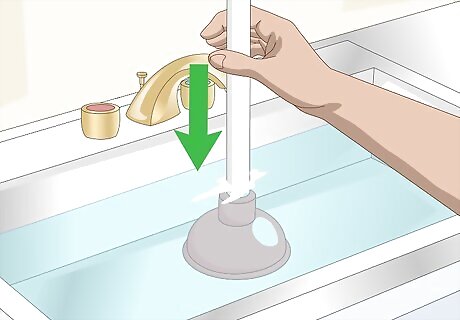
Put the plunger in the water and create a seal. Dip your plunger into the sink filled with water and press down on the bottom of your sink to remove all the air inside of it. Put a rag in the other sink's drain if you have a double sink to create a closed seal.
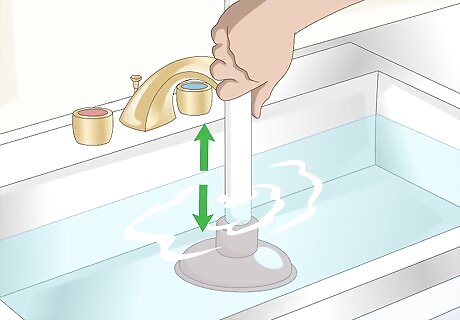
Plunge up and down over the drain. Use the straight handle on the plunger to push up and down on it. The seal ensures that you force water, not air, down the drainpipe. This will dislodge any obstructions or food particles that are clogging up your sink. Keep towels around to clean up the water that spills.
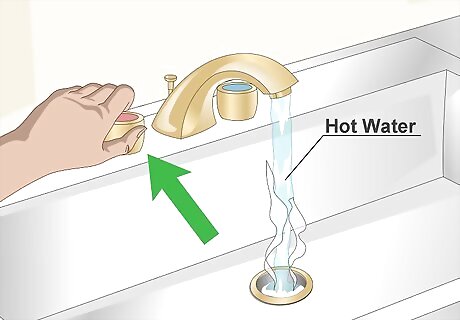
Rinse the drain with hot water. Finish cleaning your drainpipe by running hot water from the faucet. You can also flush the pipe with boiling water.
Unclogging Hair with a Snake
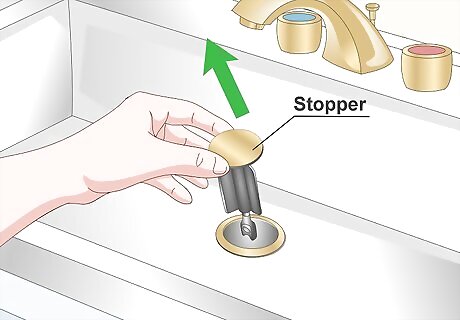
Remove the stopper. Unscrew or pull out the stopper in your drain. Some tubs also have an overflow plate under the faucet that you'll have to unscrew to remove the drain. As you remove the stopper, you may pull up some hair that's stuck down the drain pipe. Clean off the bottom of the stopper and wipe down the area if there is any gunk or hair that you've pulled up.
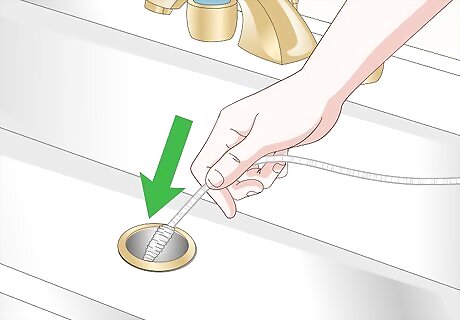
Insert the snake down the pipe. You can get a more heavy duty drain snake from a hardware store, or you can use a disposable snake that comes with drain pipe cleaners. If you are using a piece of equipment from the hardware store, it will most likely have a crank that you must rotate to feed the snake down the drain. There are also are gas and electric powered commercial grade drain snakes that you can rent from the hardware store. EXPERT TIP Kadi Dulude Kadi Dulude House Cleaning Professional Kadi Dulude is a House Cleaning Professional and the Owner of Wizard of Homes, a New York City-based cleaning company. Kadi has over 10 years of experience and manages a team of over 90 registered cleaning professionals. Her cleaning advice has been featured in Architectural Digest and New York Magazine. Kadi Dulude Kadi Dulude House Cleaning Professional If you don't have a snake, try this instead: Bend a wire clothes hanger so it's straight, then gently work it down the drain and try to dislodge whatever is clogging the drain. You can also make a hook at the end of the wire to pull up any hair that's stuck in the drain.
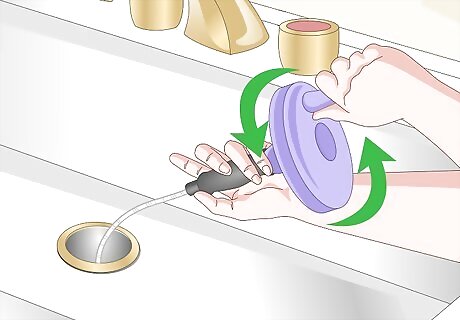
Rotate the snake until it grabs hold of the hair. Turn the snake as it goes down the drain so that it scrapes the side of the drainpipe. Continue to rotate it until you break through the clog or the snake won't go any further. As the snake is rotated, it should collect the hair that's clogging your drain. When you feel resistance, it means that you've reached the clog.
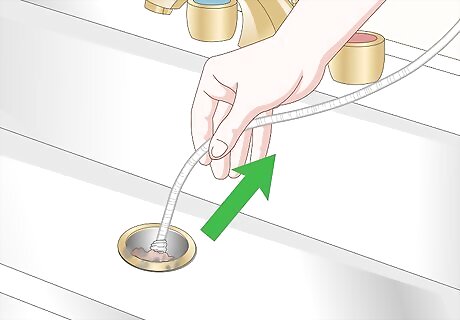
Slowly pull the drain snake out of the drain. Slowly remove the snake from your drain. If you're using a residential grade drain snake, you'll have to rotate the snake's handle the other way to retract it. As the snake comes out of the drain, it should pull out any hair that was stuck in the pipe
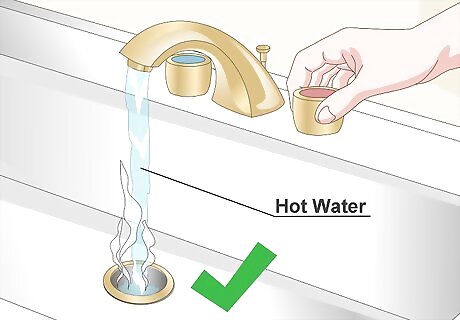
Run water from the faucet to see if it's still clogged. Run hot water from your faucet to see if you've cleared the hair that was clogging your drain. If the drain is still clogged, repeat the process until you clear the hair out of the drain.
Deodorizing Your Drain
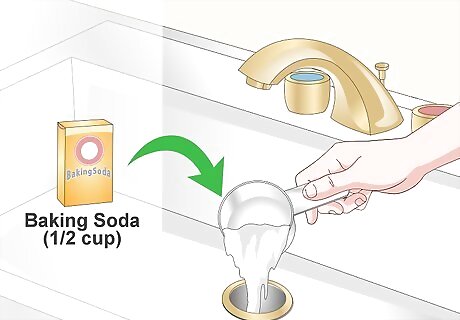
Pour 1/2 cup (170 g) of baking soda down your drain. Measure a half cup (170 g) of baking soda in a measuring cup and pour it down your drain, coating the sides of the drain pipe.
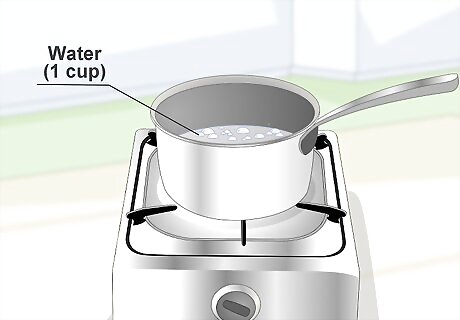
Boil 1 cup (236.58 ml) of water in a pot. Turn your stovetop to high and pour 1 cup (236.58 ml) into the pot. Continue to heat the pot until the water boils.
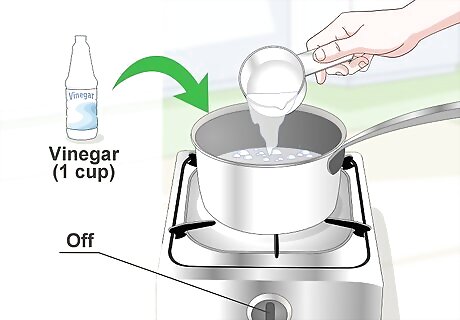
Add 1 cup (236.58 ml) of vinegar to the pot. Purchase white vinegar from the grocery store. Pour a cup of the vinegar in a measuring cup. Turn off the stovetop and combine the vinegar with the hot water.
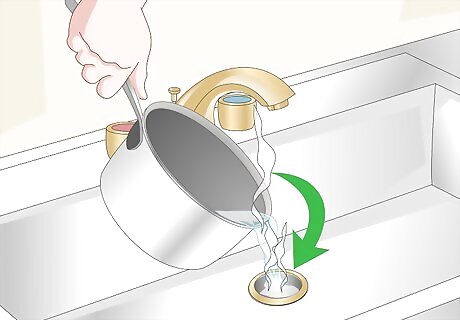
Pour the water and vinegar mixture down the drain. Transport the pot of water over to the drain that needs cleaning and slowly and carefully pour it down your drain. If you have plastic pipes, let the boiling water cool down for 4 - 5 minutes before you pour it down your drain.
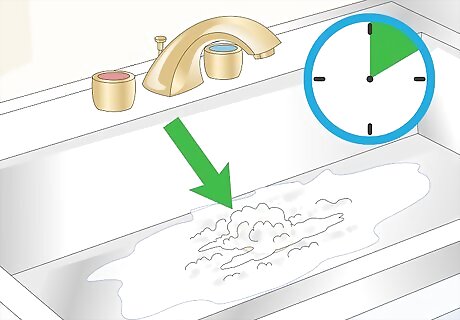
Let the solution sit for 10 minutes. The baking soda should start to react to the vinegar and foam up. The foam will help clean grime and oil from the inside of your drainpipe.
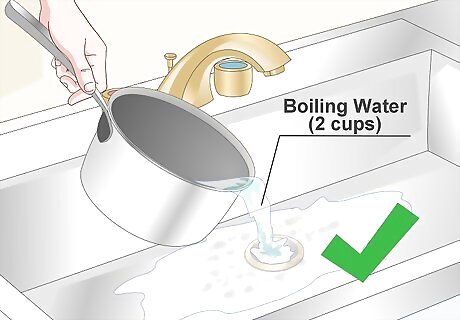
Flush the drain with another pot of boiling water. Boil 2 cups (473.17 ml) of water in your pot. Slowly pour the water down the drain to flush the foam down the sink.











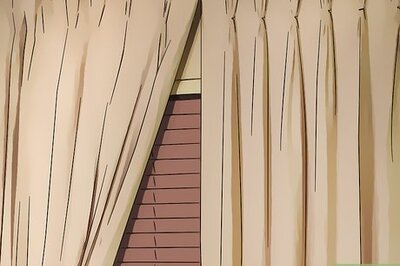








Comments
0 comment